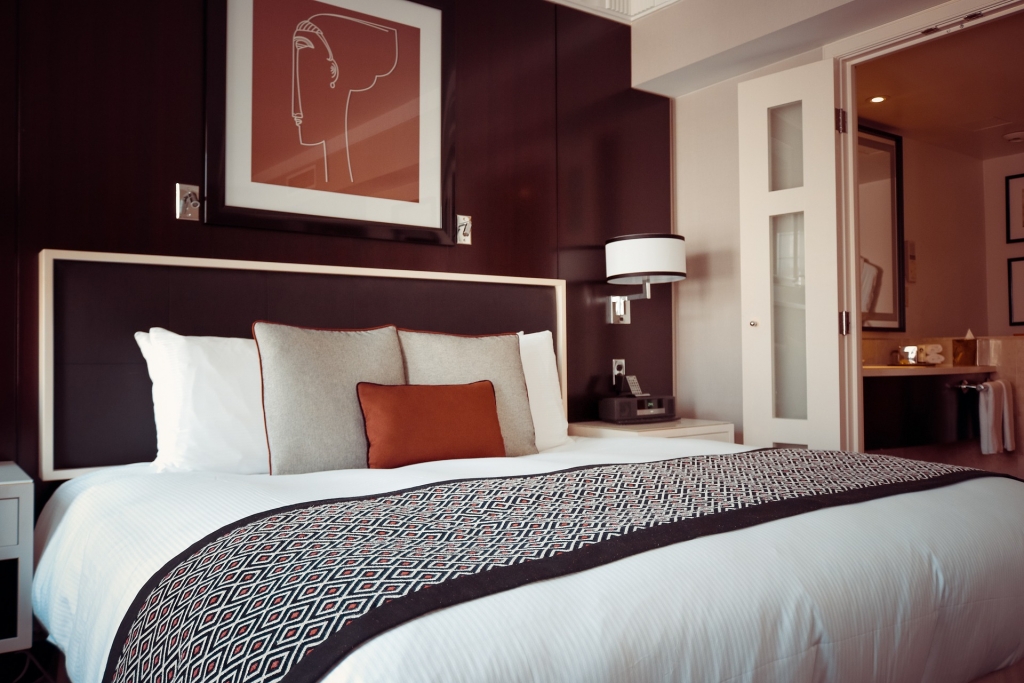Master Bedroom With Ensuite And Dressing Room

Bedrooms
Bedrooms
A bedroom is a private habitable space within a dwelling, for personal use, storage and rest. The performance criteria set out by the RESIDENTIAL SERVICES BUILDING STANDARD states "Bedrooms must provide adequate personal space facilitated for each resident".
Bedrooms require an access door, windows providing sufficient ventilation and natural light. Electrical fittings and smoke alarms are also required to meet Australian Building standards.

Standard bedroom sizes
There is no official minimum size for a bedroom, however adequate size is needed to fit a bed and perform personal activities. The master bedrooms usually consist of a walk in wardrobe and attached bathroom or ensuite. The 3rd or 4th bedroom in a house tends to be the smallest and can often be used as the office or study.
 Bedrooms can vary in size and shape. Measures are from internal walls excluding wardrobes and entry alcoves. The following sizes can be used as guide:
Bedrooms can vary in size and shape. Measures are from internal walls excluding wardrobes and entry alcoves. The following sizes can be used as guide:
Investment home
- Master bed – 3.5m x 3.5m
- bed two & three – 3.0m x 3.0m
- bed 4 – 2.8m x 2.8m
Owner Occupier
- Master bed – 3.8m x 4.0m
- bed two & three – 3.2m x 3.2m
- bed 4 – 3.0m x 3.0m
The size performance requirement for a bedroom states: The minimum unencumbered floor area for each bedroom is-
(i) for one person – 7.5m2; or
(ii) for two people – 11m2
If any bedroom has dimensions of 2.7m or less it is extreme tight for a double bed and egress can become difficult. A bedroom of this size is not practical and should be considered a kids room, a baby's room or an office. If a bedroom is smaller than 2.7m by 2.8m (7.5m2) it technically should not be labeled a 'bedroom' as per the RESIDENTIAL SERVICES BUILDING STANDARD
A Bedroom is required to provide storage for each resident with minimum dimensions of 300mm wide and 450mm deep and 900mm high; and protective hanging space of 0.6m per occupant . Wardrobes commonly missing in older established homes and are now a must in modern day homes. (refer to Wardrobes for further details).
Design and Layout
Take note of the door position into a bedroom. The best position for a door is to be recessed into a corner ideally next to the wardrobe. This maximises the rooms egress and does not inflict with furniture layout. If the door is positioned in the middle of the room it can compromised the usable space and the rooms function can dramatically be reduced.

When reviewing a rooms layout imagine all the possible furniture arrangements including, desks, dressing and bedside tables positions. As a rule a 700mm minimum should be left to allow comfortable egress between spaces. Window sizes and positions are also key to a rooms layout. Window sizes and placements can effect the layout and positioning of furniture in a room. If there is limited space ensure window sill heights are high enough allowing furniture to be placed underneath(refer to windows for further details). Ensure the positioning of the bed and bedside tables do not affect egress and the opening of doors. The electrical layout should also reflect furniture layouts (refer to electrical for further details).
A bedroom must have natural ventilation and light to in order to comply with Building Code of Australia. The BCA states that a bedroom must have windows that are equal in size to at least 10% of the rooms floor area and ventilation only 5%.
According to BCA Vol 2 part 3.8.2, the minimum ceiling height of a bedroom must be no less than 2.4m (refer to Layout & design for more info)
Those ugly Smoke alarms that are stuck to your ceiling must also comply with AS 3786. It is law that they are to be fitted to all bedrooms as per the Building Code of Australia 3.7.2.2.
Bedroom locations
Generally bedrooms are located on southern and western sides of a dwelling as a well designed home will always prioritise the main living areas to capture the northern aspect.
Often the master bedroom can be separate from the remaining bedrooms or divided by the main bathroom or living room. This segregation provides a little more privacy to the master bedroom instead of having kids room at your door stop.
The remaining bedrooms are usually clustered together within close proximity of bathroom facilities. Avoid having bedrooms scattered throughout the house and having to pass through main living areas to access facilities. This is a sign of poor design and reduces privacy.
Related Posts
Master Bedroom With Ensuite And Dressing Room
Source: https://www.hinterlanddrafting.com.au/bedroom/


Posting Komentar